featured
15 Plant-Centric Tips for Commercial Cannabis Cultivation
Published
2 weeks agoon
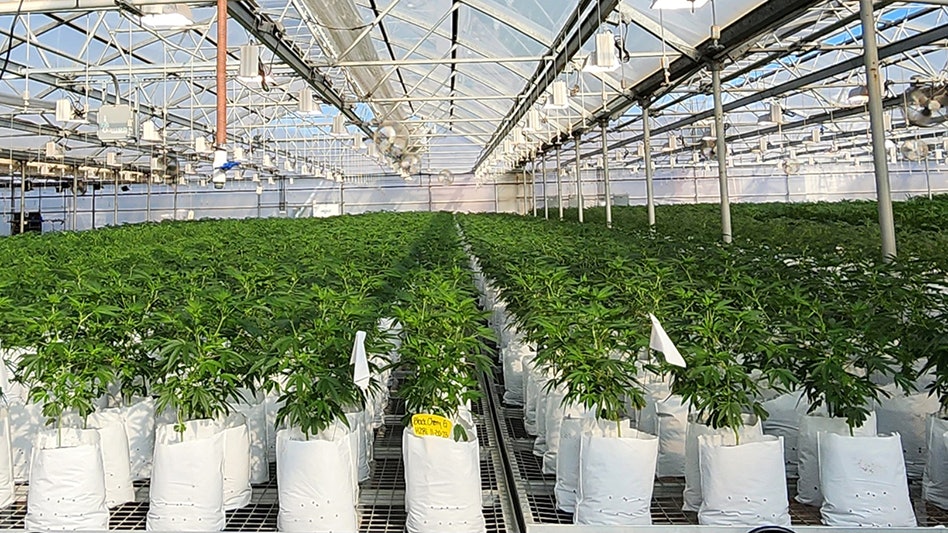
As the cannabis industry has become more competitive and margins have tightened, leaning on the expertise of seasoned cultivators has become increasingly invaluable.
From avoiding pest problems to refining environmental strategies and mastering the post-harvest process, building upon the work and innovations of those who have been there and done it remains key to improving quality and increasing yields. At the end of the day, shared knowledge for the betterment of all has advanced myriad industries—not just cannabis.
The plant-centric cannabis cultivation tips provided here are from four cultivators who share a passion for the plant but come from different backgrounds and growing techniques, from an old-school breeder on the West Coast to a multistate grower with an ornamental greenhouse background, a brand-centric grower in the Midwest, and a scientific and sustainable-based outdoor grower in New York.
Their shared wisdom is an effort to prioritize best practices in an open forum to further discussions, accelerate success and help the industry win as a whole.
Tips from …
 Shane Yoakam (aka Suny Cheba)Photo provided
Shane Yoakam (aka Suny Cheba)Photo provided
1. Follow IPM Best Practices: “Scouting plants for pests and disease is a key part of successful cultivation. Utilizing mapping, flagging and sticky traps to monitor species and population levels allows a grower to make treatments with precision. Learning to use banker, trap and companion plant species around and in your garden helps create defensive garden perimeters and provides beneficial insects a place to feed, rest and procreate. For a higher quality product, use non-oil-based treatments in the flowering phase.”
2. Choose Proper Substrates: “A clean, healthy organic substrate is critical in cultivating quality flower, one that many tend to skip over to keep costs low. Choosing the right substrate and porosity to match your immediate environment and cultivation style yields the best results. Properly using substrates with amended inputs, such as activated biochar, can help reduce watering and nutrient inputs. Always remember that organic soils are more forgiving than rockwool or coco in high heat events and emergencies.”
3. Pick and Trial New Products: “Proper trials require dedicated space, separate applications and extra labor. Before trying a new product, do the cost analysis on the item and compare all the associated costs. Most trials will likely end after running costs and/or exploring alternatives. After committing to a trial, follow proper instructions, use the correct application or dosage rates, and collect as much data as you can to quantify the results. It is crucial to always conduct small and controlled trials.”
Tips from …
 David RisleyPhoto provided
David RisleyPhoto provided
4. Monitor Your Environment Closely: “Monitor your environment throughout the day and review historical data. Although environmental and control system management have come a long way, particularly in an indoor setting, those of us with greenhouses face additional challenges. Do not take it for granted that your system is performing well through the night just because your plants are alive in the morning! How high is your humidity really spiking when your lights turn off? Seasonal weather changes usually require a rethink of your control strategies; track your system performance and adjust your setpoints as needed. Does your system react as needed during a storm when humidity is high? Do your vents close during high winds? Some control systems are more capable than others, but I’ve never seen one that can do it all. As a cultivator, you need to know the line between automation and human intervention.”
5. Track and Monitor Strain and Batch Performance: “Have a system in place to track and monitor strain and batch performance. In addition to tracking yield, calculate wet to dry flower weight, which can be used as an indicator of finished flower weight at time of harvest. We usually see a 10 percent conversion, so 2,000 pounds harvest weight should yield around 200 pounds dried flower. Track ratios of A, B and C buds. Usually, C buds are sold at a discount, so plants with a disproportionately high C-bud ratio can actually be less valuable despite decent yields. It can also indicate overhandling in the post-harvest. Lastly, it is important to monitor bud/trim ratios. Anything under 60 percent average should be investigated to determine the reason. A high trim ratio can indicate poor canopy management, early harvest or an overzealous trim crew. There are a few good commercial software options that make this easy—or you can assign the task to an in-house person if they have the right skill set. Compare notes from the cultivation side to better understand why your plants may have performed the way they did. Have a goal in terms of strain variety, flavor profiles, yield, etc. Cull any strains that don’t hit the mark.”
6. Push for Improvements: “Try new things. This can be different trim techniques, planting density, feed adjustments, light and environmental tweaks. We like to run a ‘kitchen sink’ plant every few rounds where we throw everything but [the kitchen sink] at it, no expense spared. Just how nice can a plant be made to grow? Every batch is a new opportunity to learn. Some trials may only require visual comparison. Others should be tracked through harvest to compare weights, quality, potency, etc. It is very hard to see a 6 percent increase across a sample batch of plants, but an extra 60 pounds on a 1,000 [pounds] can make all the difference in the world. Consistently push to better understand your process and make improvements.”
Tips from …
 Scott GayPhoto provided
Scott GayPhoto provided
7. Sterilize, Sterilize, Sterilize: “Use sterile techniques. During our cloning process and throughout the life of every plant, we observe a surgical standard to avoid the spread of any possible virus. Hop latent viroid is the boogeyman. We sterilize all equipment between strains.”
8. Practice Strong IPM Protocols: “We spray every week proactively. We believe an ounce of prevention is worth a pound of cure. We perform daily scouts to look for herms, pests or mold. The sooner something is caught, the less loss there is. We also use a specific workflow as teams support each other. We move from the youngest room to the oldest room. This is to avoid any pest or disease process having access to our propagation room. However, we generally try to avoid any unnecessary exposure.”
9. Monitor for Stress: “Understand how to avoid, identify and react to stressed plants. We monitor constantly for stress. We do challenges—an example would be to increase light intensity—and then monitor for positive or negative results. Develop techniques to treat stressed plants to shorten recovery time.”
10. Leverage Momentum: “We don’t cater to weak plants. While we try to avoid stressing our plants [other than intentional challenges], we do try to push them to the very limits of what is possible. An example, if we have two strains and one strain is weak and not tolerating challenges well. We think long and hard before lowering the inputs due to stress. That would cause a loss in yield from the strain that was strong and not stressing. There is a tightrope the cultivator has to walk when pushing a plant.”
11. Understand How Proper vs. Improper Dry Backs Affect a Plant: “What does heavy and light mean when talking about how wet a potted plant is? This is a pet peeve of mine. Heavy and light are subjective measures that tell me more about the person saying the report than the plant. Maybe the person is weak, and to them it feels heavy. Maybe they are strong, so it feels light. Those are ‘I feel’ statements. I prefer an objective measure, like 454 grams. Failure to understand when something is drinking fast and requires an increased water-feed cycle can cause a hard dry back. Those are very bad momentum killers. On the other hand, overwatering is often something new growers struggle with, too.”
Tips from …
 Benjamin AdamsPhoto provided
Benjamin AdamsPhoto provided
12. Grow From Seed: “Seed technology has come a long way. There are solid breeding companies producing true F1 hybrids—start there. We went with Phylos Bioscience. Growing from seed not only lowers our cost of labor from cloning, but a seed’s tap root is much more vigorous, ensuring a more robust and healthy plant at the end of the life cycle. Not having to maintain mother stock is a plus for us.”
13. Work With Your Native Soil: “Test your native soil; amend it as you need. Far too often, I see outdoor grows use hot black plastic to cover native soil while they grow these unhealthy-looking plants in pots with bagged, ‘nutrient-hot’ soil. Not only is this a waste of money and environmentally damaging, it never produces a quality result. We run clover and legume cover crops to fix nitrogen over the winter and amend the soil with organic inputs in the spring as needed, from what the soil tests tell us. Not only is this cheaper, but the soil biology gives the plant exactly what it needs.”
14. Don’t Underestimate the Dry/Cure Importance: “Make sure you have adequate dry/cure space with the right climate controls. In the end, all your hard work comes down to a two-to-four-week period when you harvest and dry the plants. This is a paramount step. This separates bad weed from good weed and good weed from great weed: maintaining a cool, dry climate with proper ventilation. You have to find the ‘Goldilocks Zone,’ because you can dry the plants out too fast, but also too slow. The cure has to be just right.”
15. Use Beneficials: “Beneficial insects are your friends. You should inoculate your soil with beneficial nematodes—this takes care of most pests, either soil-dwelling or with a life cycle that includes stages in the soil, from fungus gnats to grubs to root aphids and more—and release green lacewing larvae. We inoculate with nematodes the same week we plant and release green lacewing larvae when the plants get a bit larger and foliage-dwelling pests start to have room to hide.”
Jolene Hansen is an award-winning freelance writer and editor specializing in the commercial horticulture, cannabis and CEA industries. Reach her at [email protected].

Author: mscannabiz.com
MScannaBIZ for all you Mississippi Cannabis News and Information.
You may like
-


New Mississippi vape law takes effect in October, only FDA-authorized products allowed
-
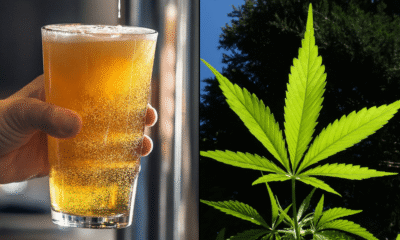

More Young Adults Are Opting For Cannabis Drinks Over Alcohol At After-Work Happy Hours, Poll Shows
-


How AI Is Changing The Cannabis Industry
-


12 New York Cannabis Businesses Sue State Over School Proximity Fiasco
-
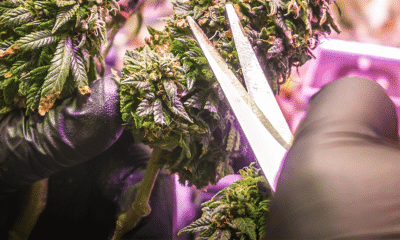

Massachusetts Auditor Notes ‘Violations’ and ‘Mismanagement’ At Cannabis Control Commission
-
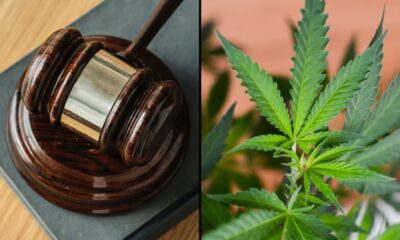

Supreme Court Gives Marijuana Companies More Time To File Petition In Case Challenging Federal Prohibition
featured
More Young Adults Are Opting For Cannabis Drinks Over Alcohol At After-Work Happy Hours, Poll Shows
Published
38 minutes agoon
August 18, 2025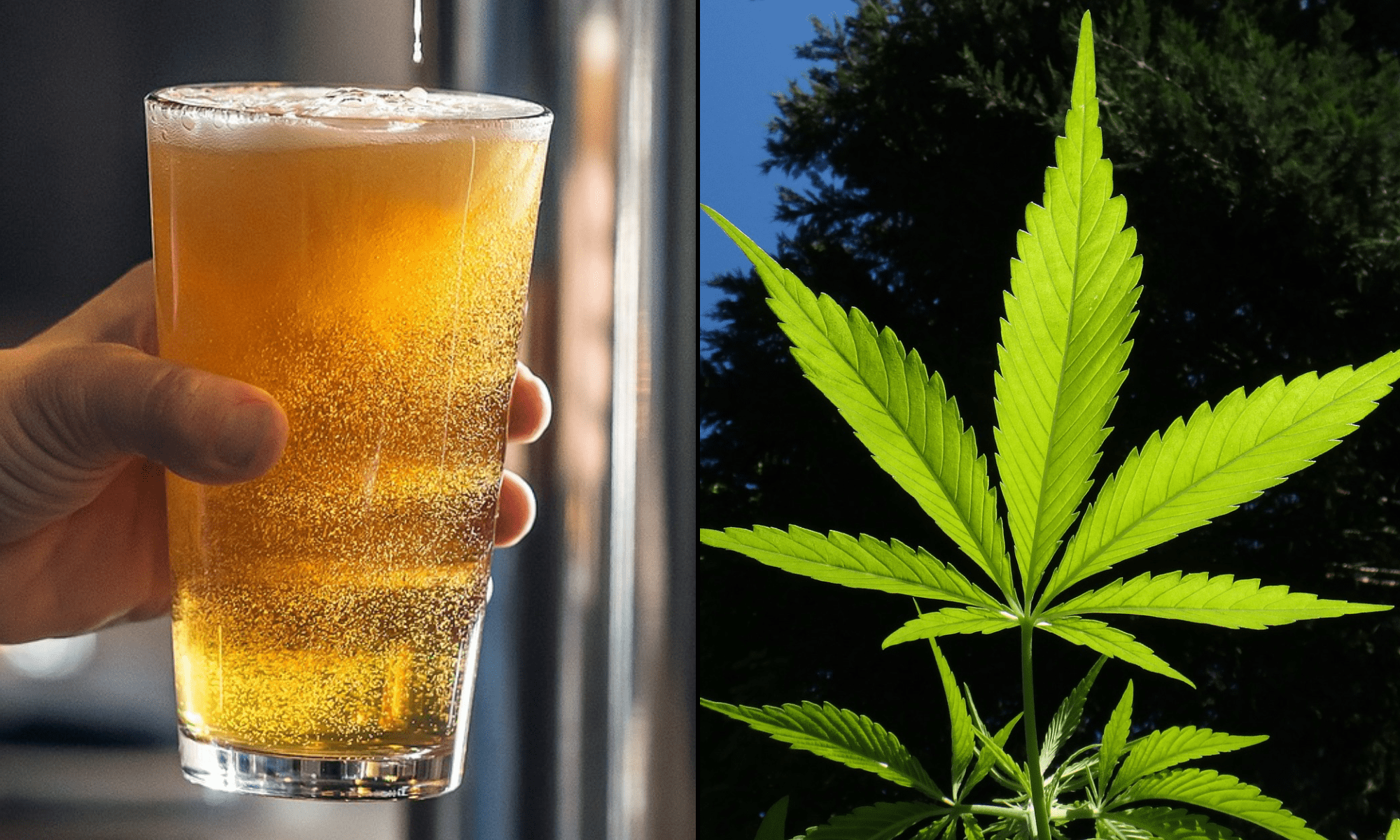
Younger Americans are increasingly using cannabis-infused beverages as a substitute for alcohol—with one in three millennials and Gen Z workers choosing THC drinks over booze for after-work activities like happy hours, according to a new poll.
The survey from Drug Rehab USA assessed the recreational preferences of 1,000 employed adults, finding more evidence that as the marijuana legalization movement achieves greater success and as awareness of alcohol-related harms has spread, a significant portion of those generations are opting for cannabis over booze.
All told, 66 percent of American adults say they’ve tried alcohol alternatives over the past six months. And 24 percent of respondents said they’ve “at least partially” replaced alcohol with non-alcohol or cannabis-based drinks.
That trend is being led by millennials and Gen Z, one of three of whom said they used THC beverages instead of alcohol drinks.
“To unwind after work, 45 percent drink alcohol, while 24 percent use nicotine, 20 percent turn to cannabis, and 16 percent choose alcohol alternatives like mocktails, non-alcoholic beer, or CBD,” the survey found.
“When it comes to winding down after a long day, Americans are reaching for a mix of familiar comforts and emerging alternatives,” Drug Rehab USA said. “While alcohol still dominates, the competition between nicotine and cannabis shows how habits are evolving across generations.”
“After-work rituals are no longer limited to a nightly drink—or even to alcohol at all. From THC-infused beverages to nicotine pouches and non-alcoholic alternatives, today’s habits reflect a broader redefinition of what it means to unwind. While motivations vary—stress, routine, social connection—the through-line is clear: Americans are turning to consumable rituals to draw a line between work and rest. For many, those rituals begin within the hour and recur multiple times a week.”
The survey findings largely track with other research assessing emerging trends in cannabis and alcohol use.
For example, a recent rodent study determined that the cannabinoid CBD reduces rates of binge drinking and alcohol blood concentrations.
Results of a separate study published in the journal Molecular Psychiatry also indicated that a single, 800-milligram dose of CBD can help manage certain alcohol cravings among people with alcohol use disorder (AUD), supporting the use of the marijuana component as a potential treatment option for problem drinkers.
Federally funded research into the effects of cannabis on alcohol use that was published in May also found that people who used marijuana immediately before drinking subsequently consumed fewer alcoholic beverages and reported lower cravings for alcohol.
The study follows a separate survey analysis published in March that found that three in four young adults reported substituting cannabis for alcohol at least once per week—a “fast-emerging” trend that reflects the “rapid expansion” of the hemp product marketplace.
The report from Bloomberg Intelligence (BI) found that, across various demographics, cannabis is increasingly being used as an alternative to alcohol and even non-alcoholic beverages as more companies—including major multi-state marijuana operators (MSOs)—expand their offerings.
The findings were largely consist with a growing body of studies indicating that cannabis—whether federally legal hemp or still-prohibited marijuana—is being utilized as a substitute for many Americans amid the reform movement.
An earlier survey from YouGov, for example, found that a majority of Americans believe regular alcohol consumption is more harmful than regular marijuana use. Even so, more adults said they personally prefer drinking alcohol to consuming cannabis despite the health risks.
A separate poll released in January determined that more than half of marijuana consumers say they drink less alcohol, or none at all, after using cannabis.
Yet another survey—which was supported by the National Institute on Drug Abuse (NIDA) and released in December—found that young adults are nearly three times more likely to use marijuana than alcohol on a daily or near-daily basis.
That poll provided more granular, age-specific findings than a similar report published last year, finding that more Americans overall smoke marijuana on a daily basis than drink alcohol every day—and that alcohol drinkers are more likely to say they would benefit from limiting their use than cannabis consumers are.
A separate study published in the journal Addiction last year similarly found that there are more U.S. adults who use marijuana daily than who drink alcohol every day.
In December, BI also published the results of a survey indicating that substitution of cannabis for alcohol is “soaring” as the state-level legalization movement expands and relative perceptions of harm shift. A significant portion of Americans also said in that poll that they substitute marijuana for cigarettes and painkillers.
Another BI analysis from last September projected that the expansion of the marijuana legalization movement will continue to post a “significant threat” to the alcohol industry, citing survey data that suggests more people are using cannabis as a substitute for alcoholic beverages such a beer and wine.
Yet another study on the impact of marijuana consumption on people’s use of other drugs that was released in December suggested that, for many, cannabis may act as a less-dangerous substitute, allowing people to reduce their intake of substances such as alcohol, methamphetamine and opioids like morphine.
A study out of Canada, where marijuana is federally legal, found that legalization was “associated with a decline in beer sales,” suggesting a substitution effect.
The analyses comport with other recent survey data that more broadly looked at American views on marijuana versus alcohol. For example, a Gallup survey found that respondents view cannabis as less harmful than alcohol, tobacco and nicotine vapes—and more adults now smoke cannabis than smoke cigarettes.
A separate survey released by the American Psychiatric Association (APA) and Morning Consult last June also found that Americans consider marijuana to be significantly less dangerous than cigarettes, alcohol and opioids—and they say cannabis is less addictive than each of those substances, as well as technology.
Meanwhile, a leading alcohol industry association is calling on Congress to dial back language in a House committee-approved spending bill that would ban most consumable hemp products, instead proposing to maintain the legalization of naturally derived cannabinoids from the crop and only prohibit synthetic items.

Author: mscannabiz.com
MScannaBIZ for all you Mississippi Cannabis News and Information.

AI is bringing changes and advancements to most industries – including cannabis
Whether you are a doctor in Nebraska, a restauranteur in Baltimore or senior engineer in Bellevue, Washington, it is upending how you do your job – both good and bad. Most areas of life are being touched and here is how AI is changing the cannabis industry. Artificial Intelligence (AI) is quietly reshaping nearly every corner of modern life, and the cannabis industry is no exception. From cultivation and retail to consumer transparency, AI is bringing new efficiency, accuracy, and trust to a market long been clouded by misinformation and stigma.
RELATED: Marijuana Might Be A Better Hurricane Party Guest
One of the most visible changes is how AI helps consumers track cannabis products. In an industry where strain names and effects can vary widely, AI-driven platforms are stepping in to provide clarity. Apps now use AI to analyze lab results, customer reviews, and even chemical profiles to match consumers with products best suited to their needs—whether it is better sleep, anxiety relief, or a more social buzz. Instead of relying on word-of-mouth or vague descriptions, consumers can access personalized recommendations grounded in hard data.

AI is also helping consumers find accurate, verifiable information in a marketplace which has sometimes struggled with exaggerated claims. Machine learning models can scan thousands of lab tests, regulatory filings, and scientific studies to identify trustworthy patterns. This gives guidance so customers are less likely to fall for marketing hype and more likely to discover which products are safe, effective, and compliant with state rules. For a generation used to researching everything from skincare ingredients to fitness supplements online, AI-driven cannabis insights are a welcome tool.
On the cultivation side, AI is revolutionizing how cannabis is grown. Smart sensors, combined with predictive algorithms, can monitor temperature, humidity, and light in real time. Farmers use these insights to maximize yield while minimizing water and energy use—an especially important consideration in an era of climate concerns and sustainability demands. By predicting plant health before problems arise, AI also reduces the need for pesticides and allows for more consistent harvests.
Retailers are benefiting as well. AI-powered inventory systems can predict which products will sell fastest, helping dispensaries avoid shortages or waste. Chatbots and virtual budtenders are guiding customers through product choices, mimicking the experience of a knowledgeable staff member but available 24/7 online. These digital assistants are especially appealing to Millennial and Gen Z consumers who prefer research-based shopping and minimal in-store pressure.
RELATED: Science Says Medical Marijuana Improves Quality Of Life
Looking ahead, AI could play a role in shaping cannabis policy and public health, too. By analyzing patterns in consumption data, researchers and regulators can better understand how cannabis affects communities, potentially leading to smarter regulations and safer use guidelines. In medical marijuana research, AI is proving especially powerful. Machine learning tools can process vast sets of patient data, clinical trial results, and genetic information to identify which cannabinoids or terpenes may be most effective for specific conditions such as chronic pain, epilepsy, or anxiety. This not only speeds up research but also helps doctors personalize treatment options for patients in ways not possible even a decade ago.
AI is doing more than making cannabis more high-tech—it’s making it more transparent, sustainable, and consumer-friendly. For an industry still overcoming decades of misinformation, which is a game-changing development.

Author: mscannabiz.com
MScannaBIZ for all you Mississippi Cannabis News and Information.
featured
12 New York Cannabis Businesses Sue State Over School Proximity Fiasco
Published
3 hours agoon
August 18, 2025
A dozen New York-licensed cannabis dispensaries are taking regulators to court over a screw-up by the state’s Office of Cannabis Management (OCM) related to their storefront locations being too close to schools.
The 12 petitioners filed the complaint on Aug. 15 in the New York Supreme Court in Albany County, against the OCM and the state’s Cannabis Control Board (CCB) over a school proximity correction that the office issued July 28. The correction, which impacts 108 dispensary licensees and 44 applicants with provisional licenses, intends to realign the OCM’s 500-foot measurement guidelines with state law.
Instead of continuing an entrance-to-entrance measurement between dispensaries and schools from the OCM’s erroneous 2022 guidance, the office now plans to measure the buffer zone from the entrance of a cannabis store in a straight line to the nearest property line boundary of a school’s grounds to move into compliance with New York’s cannabis law.
Following the proximity correction issuance, OCM Acting Executive Director Felicia A.B. Reid sent a letter on Aug. 6 to the 152 impacted businesses, clarifying that the 108 licensees may remain open or continue to work toward opening in their current locations as state officials push lawmakers for a legislative fix to grandfather in their locations. The 44 applicants, meanwhile, will need to move locations and will have access to $250,000 each from a $15 million relief fund to lessen their burdens.
Despite the assurance that the 108 licensees can remain put—and even continue to operate while the OCM delays reviewing any license renewals pending the legislative fix—the petitioners are asking the state Supreme Court in Albany to annul the OCM’s revised interpretation of Cannabis Law § 72(6) and declare that their locations remain compliant under a lawful reading of that law as well as the OCM’s 2022 guidance.
The 12 cannabis businesses are also asking that a State Supreme Court judge issue a preliminary and permanent injunction preventing the OCM from taking any enforcement actions against them based on the office’s new interpretation of the law, forcing the OCM to instead keep its previous interpretation that regulators used to review and approve site plans to issue licenses.
“Relying on those approvals, petitioners poured their life savings into launching their businesses,” the complaint states. “They signed leases, completed build-outs, hired employees and opened their doors to the public under the state’s very detailed framework. But now, in a complete about-face, OCM incredulously claims it got the law wrong all along.”
Furthermore, the petitioners claim that the OCM changed its guidance based on a new interpretation of the law without any formal rulemaking process or public notice. They argue that the informal rulemaking violates the State Administrative Procedure Act and that state officials arbitrarily redefined their own regulations.
Seven of the 12 businesses suing the state are either open or have received their final licensure to open, meaning the state has assured them they do not need to move locations and can remain open even with expired licenses—the OCM indicated it cannot approve their license renewals until state lawmakers act. However, some businesses fear that insurance companies and banks may refuse to service them if their licenses have expired, even in an interim phase.
“Petitioners face numerous collateral consequences as a result of OCM’s unlawful reinterpretation of Cannabis Law §72(6),” the complaint states. “Specifically, petitioners are required as part of their leases to be in compliance with all cannabis laws. OCM’s arbitrary and capricious actions have placed them at risk of falling into material breach with their lessors and, if allowed to continue, will cause them irreparable harm.”
These seven businesses include: ConBud (Manhattan), The Cannabis Place (Queens), Summit Canna (Bronx), Hush (Bronx), High Fade (Manhattan), Housing Works Cannabis Co. (Manhattan) and Common Courtesy Dispensary (Queens).
Meanwhile, the other five petitioners in the lawsuit are cannabis business applicants who received provisional licenses that are not yet finalized and will therefore be forced to pack up and change locations. These businesses include: Rezidue, Elise Pelka, Toastree, Monarch NYC and Luxe Leaf Boutique.
According to the lawsuit, while each of the five applicants has incurred significant buildout expenses, Rezidue, Elisa Pelka and Lux Leaf Boutique have completed their buildouts and were ready to begin operating upon a virtual inspection and gaining final licensure.
The petitioners’ construction costs ranged from $500,000 to $1,000,000, falling short of the $250,000 available per applicant in the state’s relief fund, according to the lawsuit.
“Petitioners have each expended nearly and in some cases over $1 million in preoperational expenses, and several million dollars each in post-operational expenses in reliance of OCM’s assurances,” the complaint states. “If OCM’s new and unlawful interpretation is allowed to remain in force, petitioners will also lose hundreds of thousands of dollars in deposits and lease termination penalties that cannot be recouped.
“Additionally, petitioners have all executed personal guarantees on their commercial leases, which would not only bankrupt the businesses, but also the individuals who guaranteed these leases.”
The petitioners argue that these expenses represent irreparable harm, which the court has the authority to prevent.
Other arguments the 12 cannabis businesses made in the lawsuit include:
- Retroactively revoking their license rights without notice or hearing violates due process;
- The OCM violated the equal protection clause of the state’s Constitution by revoking their proximity protections and thereby allowing competing applicants to gain favorable locations (in addition to the 500-foot school buffer zone, dispensaries must adhere to bigger buffer zones between other dispensaries).
- By pre-emptively denying licensees renewals, the OCM has engaged in unlawful “taking” without affording the petitioners due process of the law by way of a fair hearing;
- The plaintiffs’ investments have been rendered valueless by the OCM’s retroactive policy change, amounting to a “regulatory taking” under the New York Constitution; and
- The OCM’s new interpretation of the state’s cannabis law as it relates to school proximity requirements disproportionately harms those who were already disproportionately harmed by the drug war, which violates the state’s Marihuana Taxation and Regulation Act (MRTA) provisions to prioritize the inclusion, participation and sustainability of equity applicants.
“OCM’s reinterpreted rule disproportionately harms these stakeholders and licensees and undermines the very purpose of this law,” the complaint states about the latter bullet point. “Petitioners do not come from generational wealth and therefore cannot sustain such a hit. Their lives would be shattered while the OCM simply says ‘I’m sorry.’”
In particular, 11 of the plaintiffs are conditional adult-use retail dispensary (CAURD) licensees who were prioritized by the state because their businesses were owned by justice-involved individuals who reside in New York.
The 12th plaintiff is a social and economic equity (SEE) licensee, a category reserved for justice-involved individuals, minority- or women-owned businesses, distressed farmers, or service-disabled veteran-owned businesses.
“Petitioners would experience harm unlike anything they have faced before and would be relegated to levels of crippling debt, the likes of which they could never escape,” the complaint states. “The purpose of the MRTA was to undo these past injustices, not to exacerbate them.”

Author: mscannabiz.com
MScannaBIZ for all you Mississippi Cannabis News and Information.

New Mississippi vape law takes effect in October, only FDA-authorized products allowed

More Young Adults Are Opting For Cannabis Drinks Over Alcohol At After-Work Happy Hours, Poll Shows

How AI Is Changing The Cannabis Industry

12 New York Cannabis Businesses Sue State Over School Proximity Fiasco

Massachusetts Auditor Notes ‘Violations’ and ‘Mismanagement’ At Cannabis Control Commission

Supreme Court Gives Marijuana Companies More Time To File Petition In Case Challenging Federal Prohibition

Canopy USA Appoints New Executive Team to Accelerate Growth

Washington Adult-Use Cannabis Sales Decline for Fifth Straight Year

Delaware Governor Seeks Marijuana Regulation Advice From Colorado Counterpart As State’s Legal Market Launches

Major trucking group’s cannabis rescheduling concerns (Newsletter: August 18, 2025)

From The Vault: The HIGH TIMES interview Allen Ginsberg (1992)

Court throws out part of New York’s marijuana licensing rules

Watch Immigration Enforcement Rattles the Cannabis Industry | SoCal Matters Season 2025

Two arrested as police close four unlicensed cannabis shops in Seneca Falls

High-potency cannabis use linked to psychosis | Watch News Videos Online

High Times Strains Of The Month: August 2025

Texas Crime Labs Say They Don’t Have Enough Resources To Test Hemp Products For THC As Lawmakers Consider Ban

Trump on changes to marijuana policy: 'We're looking at it'

Realtors’ Stolen Credit Cards Are Used to Build an Illegal Marijuana Farm

Grady County Sheriff's Office makes arrests in illegal marijuana bust

High Times Was The Most Influential Publication Of My Life

Revelry NYC 2025: Inside New York’s Cannabis Culture & Industry Festival

Revelry NYC 2025: Inside New York’s Cannabis Culture & Industry Festival

Indian Tribes See Opportunity In Hemp THC Products, Even In States That Continue Marijuana Criminalization

Alert: Department of Cannabis Control updates data dashboards with full data for 2023

Connecticut Appoints The US’s First Cannabis Ombudsperson – Yes there is a pun in there and I’m Sure Erin Kirk Is Going To Hear It More Than Once!

5 best CBD creams of 2024 by Leafly

EU initiative begins bid to open access to psychedelic therapies
New Study Analyzes the Effects of THCV, CBD on Weight Loss

Free delta-9 gummies from Bay Smokes

5 best autoflower seed banks of 2024 by Leafly

Discover New York’s dankest cannabis brands [September 2024]

Curaleaf Start Process Of Getting Their Claws Into The UK’s National Health System – With Former MP (Resigned Today 30/5/24) As The Front Man

May 2024 Leafly HighLight: Pink Runtz strain

Mississippi city official pleads guilty to selling fake CBD products

Press Release: CANNRA Calls for Farm Bill to Clarify Existing State Authority to Regulate Hemp Products

Local medical cannabis dispensary reacts to MSDH pulling Rapid Analytics License – WLBT

Horn Lake denies cannabis dispensary request to allow sale of drug paraphernalia and Sunday sales | News

5 best THC drinks of 2024 by Leafly

6 best CBD gummies of 2024 by Leafly

Nevada CCB to Accept Applications for Cannabis Establishments in White Pine County – “Only one cultivation and one production license will be awarded in White Pine County”

The Daily Hit: October 2, 2024

5 best delta-9 THC gummies of 2024 by Leafly

Weekly Update: Monday, May 13, 2024 including, New Guide for Renewals & May Board meeting application deadline

PRESS RELEASE : Justice Department Submits Proposed Regulation to Reschedule Marijuana

People In This State Googled ‘Medical Marijuana’ The Most, Study Shows

Thailand: Pro-cannabis advocates rally ahead of the government’s plan to recriminalize the plant

5 best THCA flower of 2024 by Leafly
Trending
-

 California Cannabis Updates1 year ago
California Cannabis Updates1 year agoAlert: Department of Cannabis Control updates data dashboards with full data for 2023
-

 Breaking News1 year ago
Breaking News1 year agoConnecticut Appoints The US’s First Cannabis Ombudsperson – Yes there is a pun in there and I’m Sure Erin Kirk Is Going To Hear It More Than Once!
-

 best list1 year ago
best list1 year ago5 best CBD creams of 2024 by Leafly
-

 Business11 months ago
Business11 months agoEU initiative begins bid to open access to psychedelic therapies
-

 cbd1 year ago
cbd1 year agoNew Study Analyzes the Effects of THCV, CBD on Weight Loss
-

 Bay Smokes1 year ago
Bay Smokes1 year agoFree delta-9 gummies from Bay Smokes
-

 autoflower seeds11 months ago
autoflower seeds11 months ago5 best autoflower seed banks of 2024 by Leafly
-

 cannabis brands11 months ago
cannabis brands11 months agoDiscover New York’s dankest cannabis brands [September 2024]




